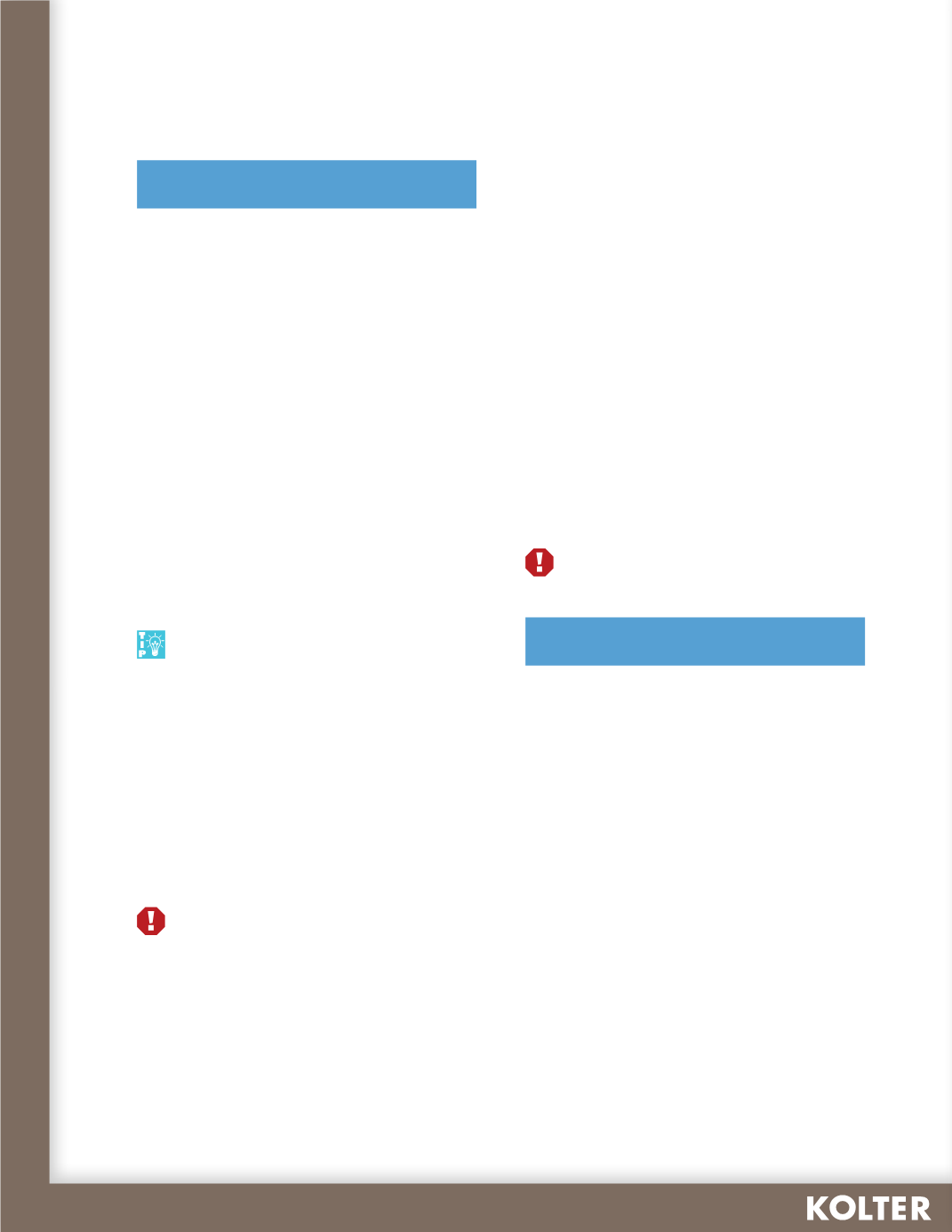
90
Drains
Water leaves your home via drains. Maintaining
them properly is key to preventing clogging,
overflowing, water damage, and other issues.
Care and maintenance
Follow these tips for maintaining your
home’s drains.
Drain traps
Most of your home’s plumbing fixtures (the
sink, shower, and toilet, for example) have a
drain trap which is a piece of pipe beneath
the fixture that’s shaped like the letter J. The
purpose is to hold water that creates a barrier
so sewer gases don’t enter your home.
HOME TIP: Given their shape, drain traps
are the most frequent area where clogs
occur.
Checking appliances for leaks
If any appliances that use water appear to be
leaking, check the drain for clogs. A clogged
drain can cause water to overflow and you may
be able to remove the clog yourself and save
money by not having to call for a repair.
CAUTION: If you use a commercial drain
cleaner to remove a clog, make sure to
avoid caustic soda. It will mix with the
grease in the drain and create an insoluble
compound.
Keeping drains clear
The following procedure, if done on a regular
basis, will help keep your drains running properly:
1. Turn on the faucet and allow hot water to run
through the drain.
2. Pour three tablespoons of washing soda (not
baking soda) into the drain.
3. Add just enough hot water to wash the soda
down the drain.
4. Wait 15 minutes for the soda to set and then
run hot water.
CAUTION: Do not put grease into a drain
or toilet.
Septic System
Septic systems include a tank and use the soil
in your yard to treat the wastewater from your
home. Have a professional pump your septic
system every three to five years.
Clearing drains
Stick a piece of cloth into any overflow
outlet. This allows the plunger to develop the
necessary pressure and suction around the
drain. Follow these steps to clear the drain:


